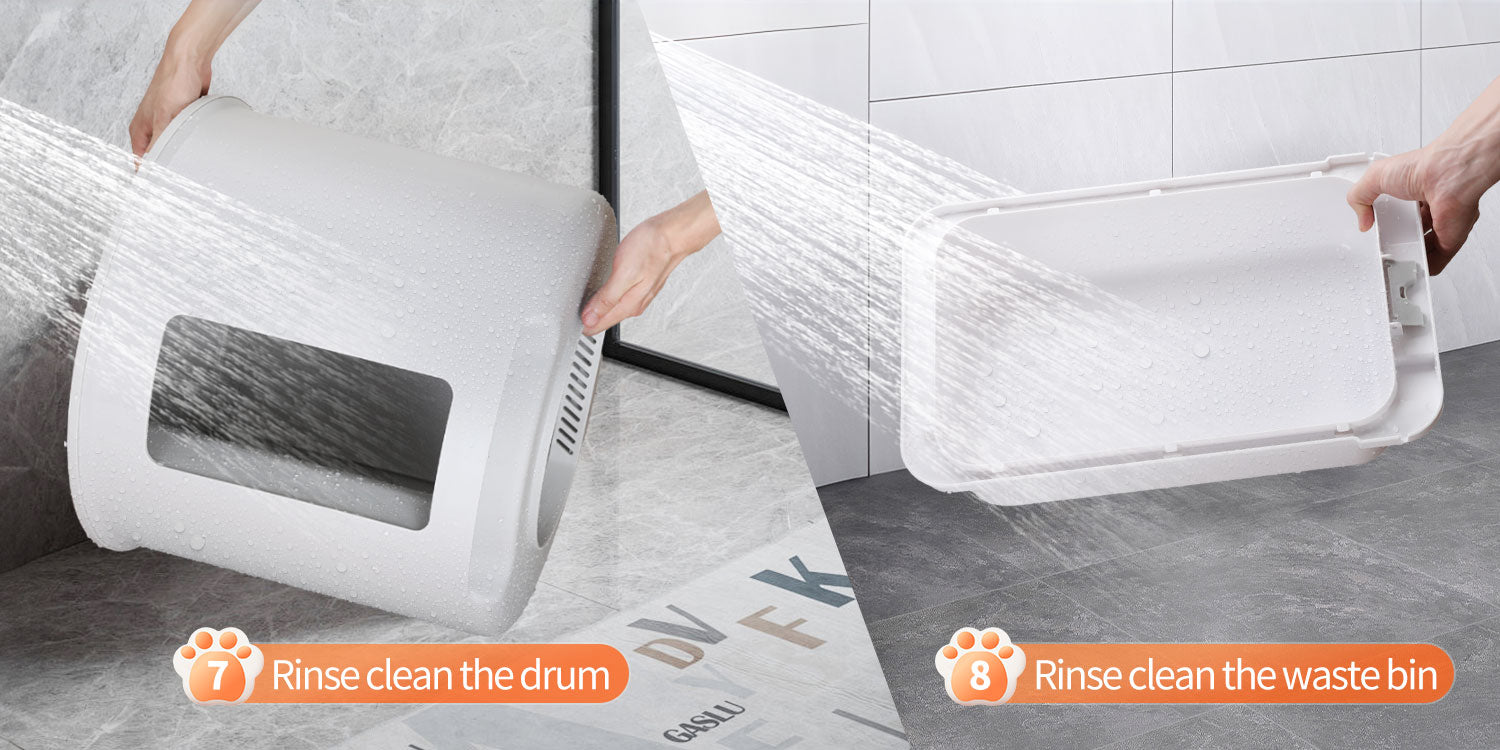Switching to a smart litter box can be stressful for cats, so gradual acclimation is crucial. Here are step-by-step guidelines to help your cat adjust:
1. Choosing the Right Smart Litter Box
Proper Size: Ensure the litter box is spacious enough to accommodate your cat’s size comfortably.
Compatible Litter: Use a litter type similar to what your cat is accustomed to (e.g., clumping clay, tofu litter) to minimize adjustment difficulties.
Noise Control: Opt for a low-noise model to avoid scaring your cat away from using the box.

2. Gradual Introduction to the Smart Litter Box
(1) Place It in a Familiar Location
Position the smart litter box in the same spot as the old one to maintain environmental consistency.
Avoid placing it in noisy or high-traffic areas, such as near washing machines or busy living rooms.
(2) Keep the Old Litter Box for a Transition Period
For the first few days, keep both the old and new litter boxes available to give your cat a choice.
Once your cat starts using the smart litter box, gradually reduce access to the old one before removing it completely.
(3) Use Familiar Litter
Start by filling the smart litter box with the same type of litter your cat is used to, ensuring a familiar scent.
If switching to a new type of litter, mix in a small amount at first (e.g., 20% new litter + 80% old litter), gradually increasing the new litter ratio over time.
(4) Positive Reinforcement
Reward your cat with treats or gentle petting whenever they approach or use the new litter box to create a positive association.
Avoid forcing your cat into the litter box, as this could create negative feelings toward it.

3. Addressing Common Adjustment Issues
Fear of Cleaning Cycle Noise:
Turn off the auto-cleaning feature initially and let your cat get used to the box itself before introducing the cleaning function.
Manually trigger the cleaning cycle when your cat is at a safe distance to help it become familiar with the noise source.
Reluctance to Enter the Litter Box:
Use catnip or pheromone sprays around the litter box area to encourage exploration.
Place familiar items, such as your cat’s toys or blanket, near the litter box to provide comfort.
Refusing to Eliminate in the Litter Box:
If your cat eliminates outside the litter box, try placing a small amount of used litter inside the smart litter box to maintain a familiar scent.
Keep the litter box consistently clean to avoid odor-related aversion.

4. Monitoring Your Cat’s Adaptation
Use the smart litter box’s app to track usage patterns and ensure your cat is adjusting well.
If your cat refuses to use the new litter box for more than 3-5 days, reintroduce the old box alongside the new one for a longer transition period.
If your cat shows severe anxiety or avoidance behavior, consult a veterinarian or pet behavior specialist for guidance.


Leave a comment
This site is protected by hCaptcha and the hCaptcha Privacy Policy and Terms of Service apply.